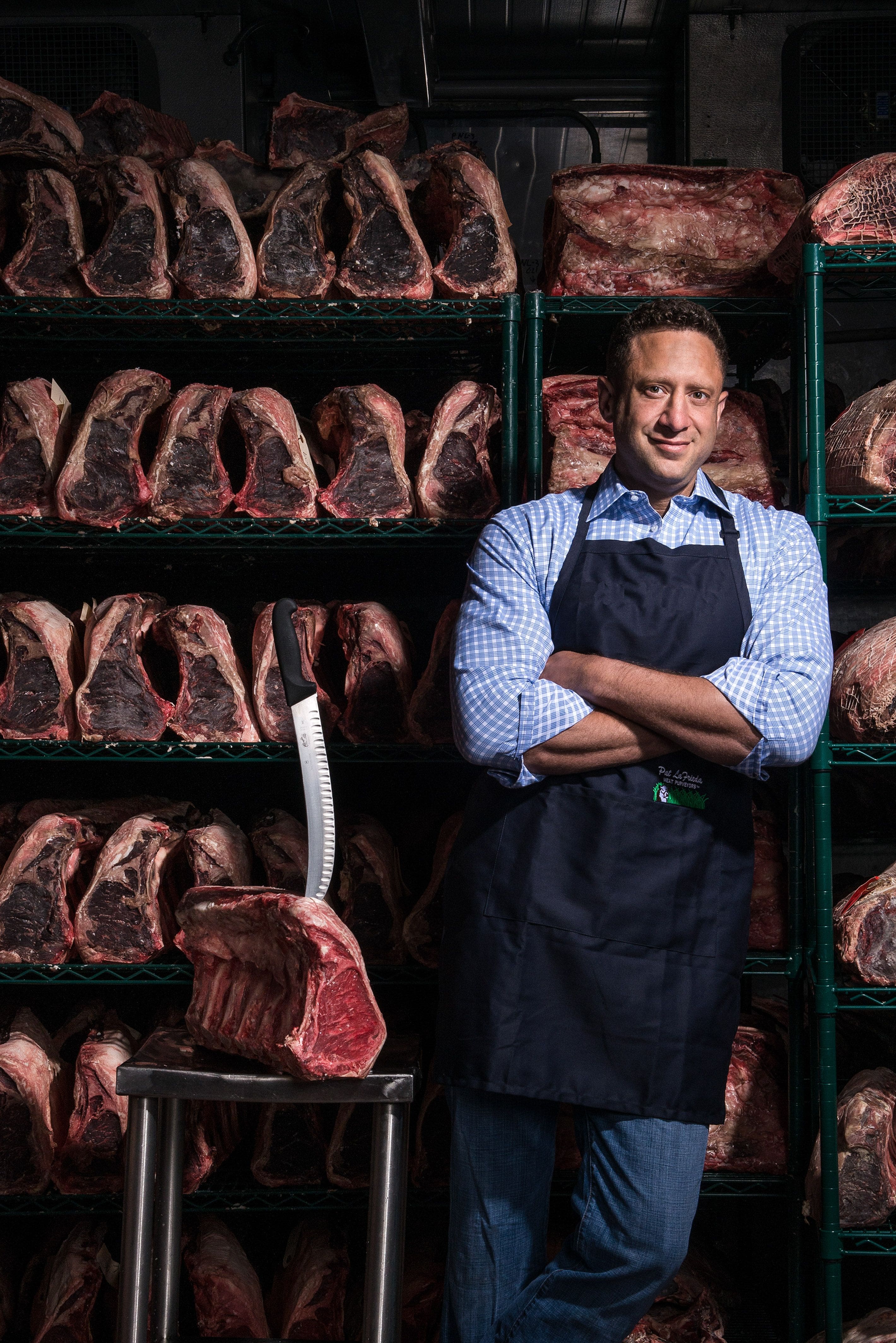Since 1994, famed butcher Pat LaFrieda has been supplying meat to top chefs and restaurants across the country (think New York City’s Eleven Madison Park and Union Square Cafe). It’s been the family business for decades, dating back to 1922, when his grandfather opened up a butcher shop in Brooklyn. We asked the magician of meat, as New York magazine dubbed him, to share his essential grilling tips plus a favorite recipe.
Know Your Budget
Before you ever get to the grilling itself, make sure you understand your budget so you can get the best steak for your money. Steaks are graded for their age and fat marbling on a scale from utility to prime, and the higher on that scale, the younger the cow tends to be with more of that delicious fat marbling. You can still get some good meat in between, though that prime label means you’re able to get that spectacular experience you’d hope for from a steakhouse off your own grill.
Embrace Thinner Cuts
Don’t be afraid of complementing big steaks with thinner cuts of meat. While we all love seeing a massive tomahawk steak or porterhouse on the grill, thicker cuts mean a more involved process. If you’re still building your grilling confidence, starting with a more modest thickness will mean a quicker process with less room for error.
Be Sure to Preheat
Before your grill meets meat, fire it up. Placing meat on a grill before preheating often leads to uneven cooking. Avoid the frustration by patiently getting your grill to the desired temperature first.
Take the Temp
There’s no shame in thermometers. Unless you’ve got infrared vision or you grill professionally, a thermometer helps take out the guesswork. At the end of the day, the goal is a delicious steak for you and your guests, so let the tools serve you.
Let It Be
Your steak is a protein, not a pincushion. While it’s tempting to poke it with a fork or tool to check the inside during grilling, you’re really just losing moisture and juices that give a perfect bite.
Finish It Off
While some thicker steaks benefit from a lower and slower heat source at the start, all steaks benefit from being finished at a high heat. Completing the grilling process with intense temperatures lets you achieve that picture-perfect sear and sizzle.
Rest Your Meat
Continuing the theme of patience, let your meat take a quick breather before serving. Place the meat aside on a rack for two minutes after it’s left the grill then cut in. The center will continue cooking, and you’ll get a more buttery texture from the juice you allowed to settle. Your more impatient guests might stand there a moment longer, but they’ll forget all about it once they taste that difference.
Skirt Steak Pinwheels
Makes 4 servings
This dish was popular with retail butchers in the forties and fifties. Angelo Bonsangue, a butcher who worked with us on Leroy Street, taught me how to make them. I occasionally teach these at cooking classes, and people love them. I often grill them at home.
2 outside skirt steaks (about 1½ pounds each), trimmed of excess fat
2 tsp. kosher salt
1 tsp. freshly ground black pepper
8 ounces grated Parmigiano-Reggiano cheese (about 2 cups)
4 lemons
1½ cups finely chopped fresh flat-leaf parsley leaves
1. Lay skirt steak on your work surface and season on both sides with salt and pepper. Sprinkle cheese over steak, reserving a ½-inch border. Grate lemon zest from all 4 lemons directly onto steak and sprinkle parsley atop lemon zest.
2. Starting at a short end, roll skirt steak from one end to the other. Tie a butcher’s knot in center of roll. Then tie 2 more butcher’s knots in center of each side. Cut roll in half along first knot (remove string) to form 2 wheels of equal size.
3. Preheat a grill or grill pan over high heat.
4. Place pinwheels cut side down on grill and cook until browned on both sides, about 8 minutes. Serve 1 pinwheel per person.




